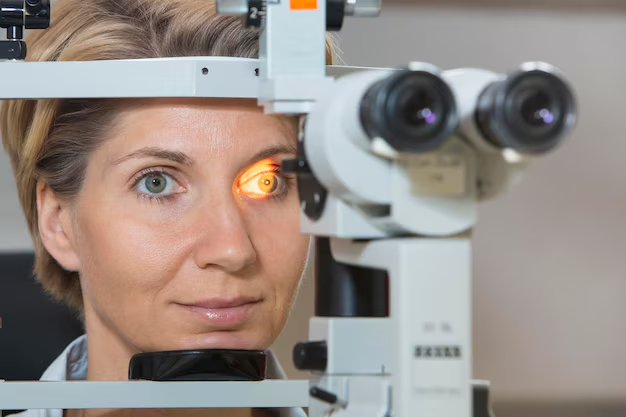Are You Ready for Cataract Surgery? Find Out Here
Cataracts are a common concern that can cloud your vision and impair your daily activities. But how do you know if cataract surgery is the solution you need? This article will guide you through understanding cataracts, identifying when surgery might be necessary, and what you can expect from the procedure. Let's explore this crucial topic in-depth and help you make informed decisions about your eye health.
🌟 Understanding Cataracts
What Are Cataracts?
Cataracts occur when the lens of your eye becomes cloudy, obstructing vision. This condition is typically associated with aging, though other factors can contribute, such as prolonged UV exposure or certain medical conditions. While cataracts are common, the progression and impact on vision can vary significantly from person to person.
Symptoms of Cataracts
Recognizing the symptoms early can help manage the condition effectively. Common signs of cataracts include:
- Blurry Vision: A general lack of clarity when viewing objects.
- Sensitive to Light: Glare and halos around lights can become more pronounced.
- Difficulty with Night Vision: Struggling to see in low-light conditions or when driving at night.
- Fading Colors: Colors may appear muted or less vibrant.
- Double Vision: Seeing two images of a single object can occur in the affected eye.
Understanding these symptoms is the first step in deciding whether cataract surgery could be a beneficial option.
🕵️♂️ Determining the Need for Surgery
Self-Assessment: Questions to Consider
If you suspect cataracts might be affecting your vision, ask yourself these questions:
- Is my vision affecting my ability to perform daily tasks?
- Do glasses or contact lenses fail to improve my vision significantly?
- Am I experiencing increased difficulties with glare or bright lights?
- Is my current lifestyle or job affected by my vision quality?
Answering "yes" to these questions might suggest it’s time to consult with an eye care professional.
Professional Evaluation
While self-assessment is a useful starting point, a comprehensive eye examination by an ophthalmologist is essential. This examination typically includes:
- Visual Acuity Test: Measures the sharpness of your vision.
- Slit-Lamp Examination: Provides a magnified view of the eye’s structures.
- Retinal Exam: Assesses the back of your eye.
- Tonometry: Measures intraocular pressure.
These tests help determine the severity of your cataracts and whether surgery is advisable for your situation.
🏥 The Cataract Surgery Process
How Is Cataract Surgery Performed?
Cataract surgery is a well-established medical procedure designed to restore clear vision by removing the clouded lens and replacing it with an artificial intraocular lens (IOL). Notably, it is often an outpatient procedure, meaning recovery at home is common.
What to Expect During the Procedure
- Preparation: Local anesthesia is typically used to numb the eye.
- Surgery: A small incision is made, and the clouded lens is removed. An IOL is then implanted.
- Recovery: The incision may not require stitching as it heals naturally. You'll receive instructions on post-operative care to ensure gradual recovery.
Types of Intraocular Lenses
Choosing the right IOL is crucial and can be tailored based on your personal needs. There are several types available:
- Monofocal Lenses: Correct one range of vision, either near or far.
- Multifocal Lenses: Can correct for both near and distance vision simultaneously.
- Toric Lenses: Specifically designed to correct astigmatism.
Discuss these options with an eye care provider to determine which lens best aligns with your lifestyle and vision goals.
💪 Navigating Life After Surgery
Post-Operative Care
Taking good care of your eyes after surgery can significantly impact your healing process. Here are some general guidelines:
- Use Eye Drops: Prescribed drops are crucial for preventing infection and controlling inflammation.
- Avoid Strain: Refrain from heavy lifting or strenuous activity.
- Protect Your Eyes: Wear protective eyewear to guard against dust and bright lights.
Most people experience improved vision within days, but complete healing can take several weeks.
Potential Benefits of Cataract Surgery
Many individuals experience significant improvements, such as:
- Clearer Vision: Restoration of color and detail perception.
- Improved Quality of Life: Enhanced ability to perform tasks and partake in activities.
- Increased Safety: Reduced risk of falls and driving accidents.
🔁 Common Concerns and Questions
Is Surgery Risky?
Cataract surgery is generally safe, but as with any procedure, it carries potential risks. Discussing these with your ophthalmologist will help to address any specific concerns.
What If I Choose Not to Have Surgery?
In some cases, delaying surgery is possible. Non-surgical measures like updated prescription glasses or anti-glare lenses might help manage symptoms temporarily.
📝 Visual Summary
Here’s a quick reference guide to help you evaluate your need for cataract surgery:
🔍 Symptoms Indicating Need:
- Blurry or cloudy vision
- Difficulty with light sensitivity
- Trouble seeing at night
- Faded colors
👩⚕️ Professional Evaluation Includes:
- Visual acuity tests
- Slit-lamp examination
- Retinal exam
⚙️ Surgery Details:
- Outpatient procedure
- Intraocular lens options
- Post-operative care important
🚀 Post-Surgery Benefits:
- Improved vision clarity
- Enhanced lifestyle and safety
- Greater color definition
📚 Final Insights
Understanding the signs of cataracts and when surgery might be necessary empowers you to make informed choices about your health. By consulting with eye care professionals and considering your daily lifestyle needs, you can decide whether cataract surgery is right for you. Always stay proactive and engage with professionals to navigate the best path for maintaining optimal vision health.
